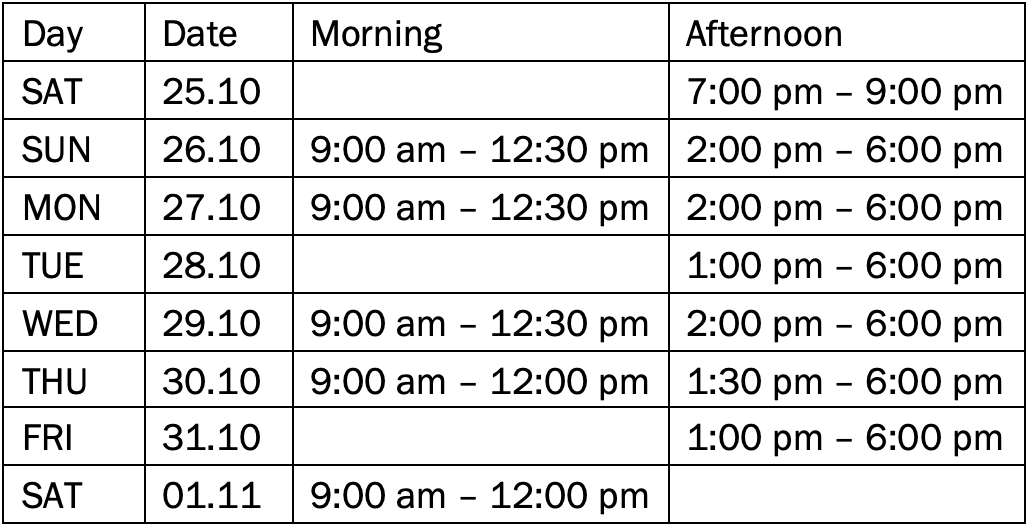
Attachment-Focused EMDR - Basic Training
With Dr Laurel Parnell

In Parts 1 & 2, you will learn how to use AF-EMDR in clinical practice. This comprehensive training includes lectures, small group practice, and demonstrations in a supportive environment.
Learning Objectives:
Construct protocols and procedures for using AF-EMDR with a variety of clients.
Demonstrate clinical application of EMDR and AF-EMDR concepts and procedural steps.
Demonstrate client selection criteria and cautions necessary for the safe use of AF-EMDR.
Utilise resource development and installation in cases of challenging life situations, blocking beliefs, or for performance enhancement
Identify methods for developing inner resources used for interweaves and client closure.
Construct AF-EMDR targets using the bridging technique
Integrate AF-EMDR into clinical practice with a range of clients and present problems
Course Requirements
You are an SPS Registered Psychologist, SAC Registered Counsellor, or have a Masters in Psychology or Counselling.
By participating, you acknowledge that you understand you may be asked to take on the role of a client to support the group’s learning. You confirm that you are psychologically and physically stable enough to engage in this role and that you will take appropriate steps to care for yourself should any discomfort arise. Additionally, you affirm your ability to access and utilise positive coping resources as needed.
Upon Completing this Course
Parnell Institute will award participants a Letter of Attendance. A Certificate of Completion will only be awarded when participants complete all three parts within two years. To be an AF-EMDR Certified Therapist, click on the links for the full certification requirements by APCB and Parnell Institute.
Course Details Part 1 & 2
25.10 - 1.11.2025
Part 1/2 Schedule
Course Details Part 3
5 - 7.11.2025
In Part 3 of Attachment-Focused EMDR training, we review the material from Parts 1 and 2, emphasizing the treatment of complex PTSD, resource development and installation, target development, case conceptualisation, working with blocked processing, dissociation, and abreactions. As in Parts 1& 2, this three-day training consists of lectures, demonstration videos, and small supervised practice sessions.
Learning Objectives:
Name and define the five basic principles of Attachment-Focused EMDR
Demonstrate EMDR procedural steps using the modified AF-EMDR protocol
Construct protocols and procedures for using AF-EMDR with a variety of clients, including those with complex PTSD and recent traumas
Identify techniques for working with blocked processing and strong emotional releases
Identify how to unblock blocked processing using interweaves
List methods for working with dissociation
Identify advanced methods for developing inner resources for developmental repair, interweaves, and client closure.
Describe how to apply AF-EMDR for grief &loss
Course Requirements
You are an SPS Registered Psychologist, SAC Registered Counsellor, or have a Masters in Psychology or Counselling.
Completed AF-EMDR Training Parts 1&2 with Parnell Institute.
Completed ten hours of consultation with a Parnell Institute consultant
Upon Completing this Course
Parnell Institute will award participants a Certificate of Completion upon completing all three parts of the AF-EMDR basic training within two years. Completing the AF-EMDR basic training fulfills one of the criteria to be an AF-EMDR Certified Therapist.
Part 3 Schedule
Booking is open
Pricing
A non-refundable deposit of SGD 500 will be required to secure your booking.
About Dr. Laurel Parnell
Laurel Parnell, Ph.D. is the director of the Parnell Institute and developer of Attachment- Focused EMDR. She is an internationally recognized clinical psychologist, author, and leading expert on Eye-movement Desensitization and Reprocessing (EMDRY therapy). Since 1995 she has trained thousands of clinicians in EMDR both nationally and internationally. She is the author of six books on EMDR, including her latest release - Rewiring the Addicted Brain
About EMDR
Eye Movement Desensitization and Reprocessing (EMDR) is a powerful and effective therapy for the treatment of trauma. EMDR therapy incorporates eye movements or other bilateral stimulation into a comprehensive approach that processes and releases information trapped in the mind and body, freeing people from disturbing images and body sensations, debilitating emotions, and restrictive beliefs. This revolutionary therapy has helped millions of clients of all ages recover from such traumas as war, accidents, assaults, disasters, and childhood abuse. EMDR has been extensively researched as a treatment for post-traumatic stress disorder (PTSD), and is considered to be an evidence-based therapy.
In addition to the treatment of PTSD, EMDR is also used to treat the psychological effects of smaller traumas that manifest in symptoms of depression, anxiety, phobias, low self-esteem, creativity blocks, and relationship difficulties. Not only does healing occur much more rapidly than in traditional therapy, but as a result of EMDR’s clearing of emotional and physical blockages, many people also experience a sense of joy, openness, and deep connection with others. EMDR is a quantum leap in the human ability to heal trauma and maladaptive beliefs.
What is Attachment-Focused EMDR?
Attachment-focused EMDR (AF-EMDR) is an evolution of standard EMDR and stresses the importance of creating safety for the client and the need to adapt treatment according to client-centered cultural and individual needs. AF-EMDR emphasizes a reparative therapeutic relationship using a combination of (1) Resource Tapping to strengthen clients and repair development deficits, (2) AF-EMDR to process traumas, and (3) talk therapy to help integrate the information from AF-EMDR sessions and to provide the healing derived from therapist-client interactions. Through these, AF-EMDR extends the use and benefits of EMDR and bilateral stimulation to clients typically less responsive to traditional EMDR protocols and helps clients experience more complete resolution.




